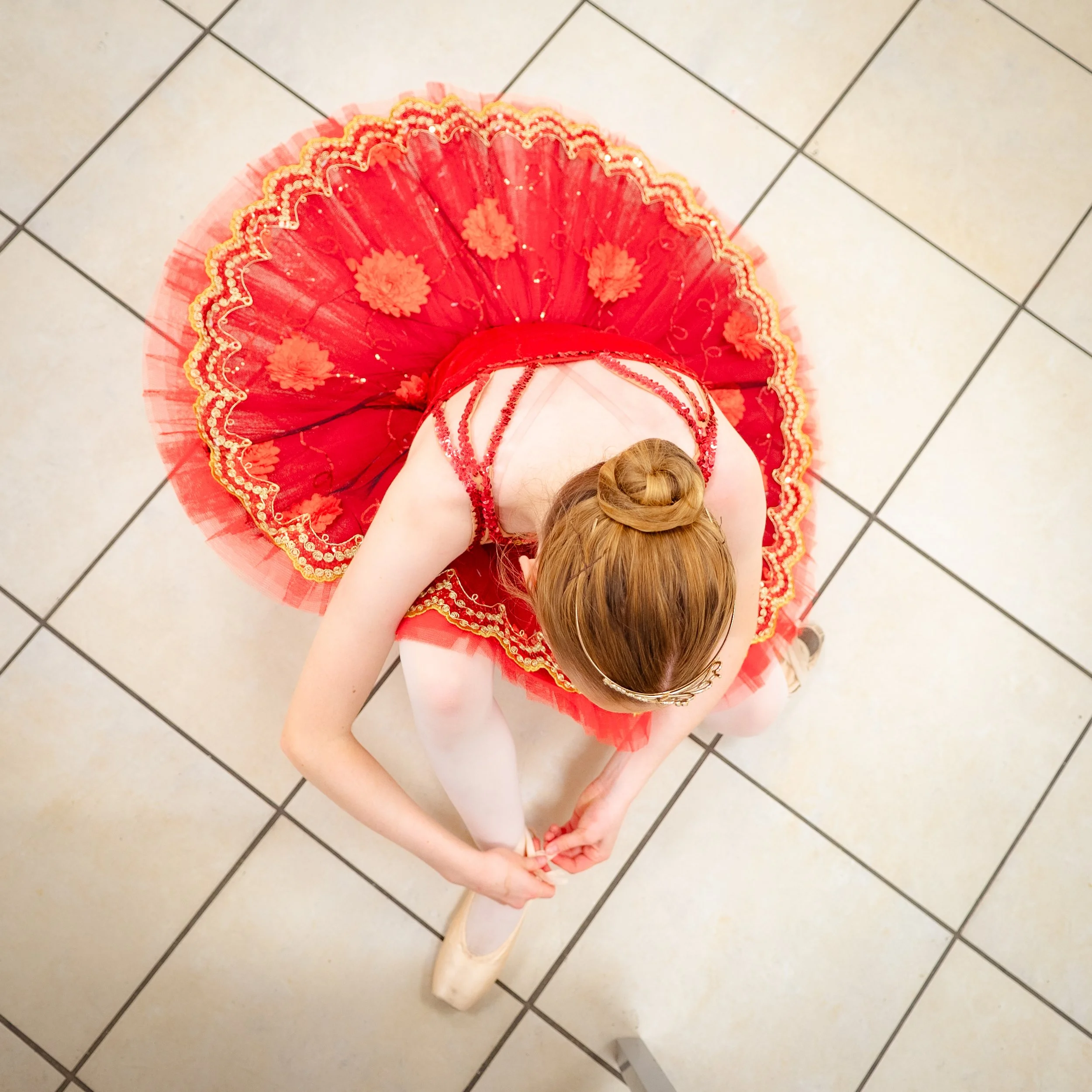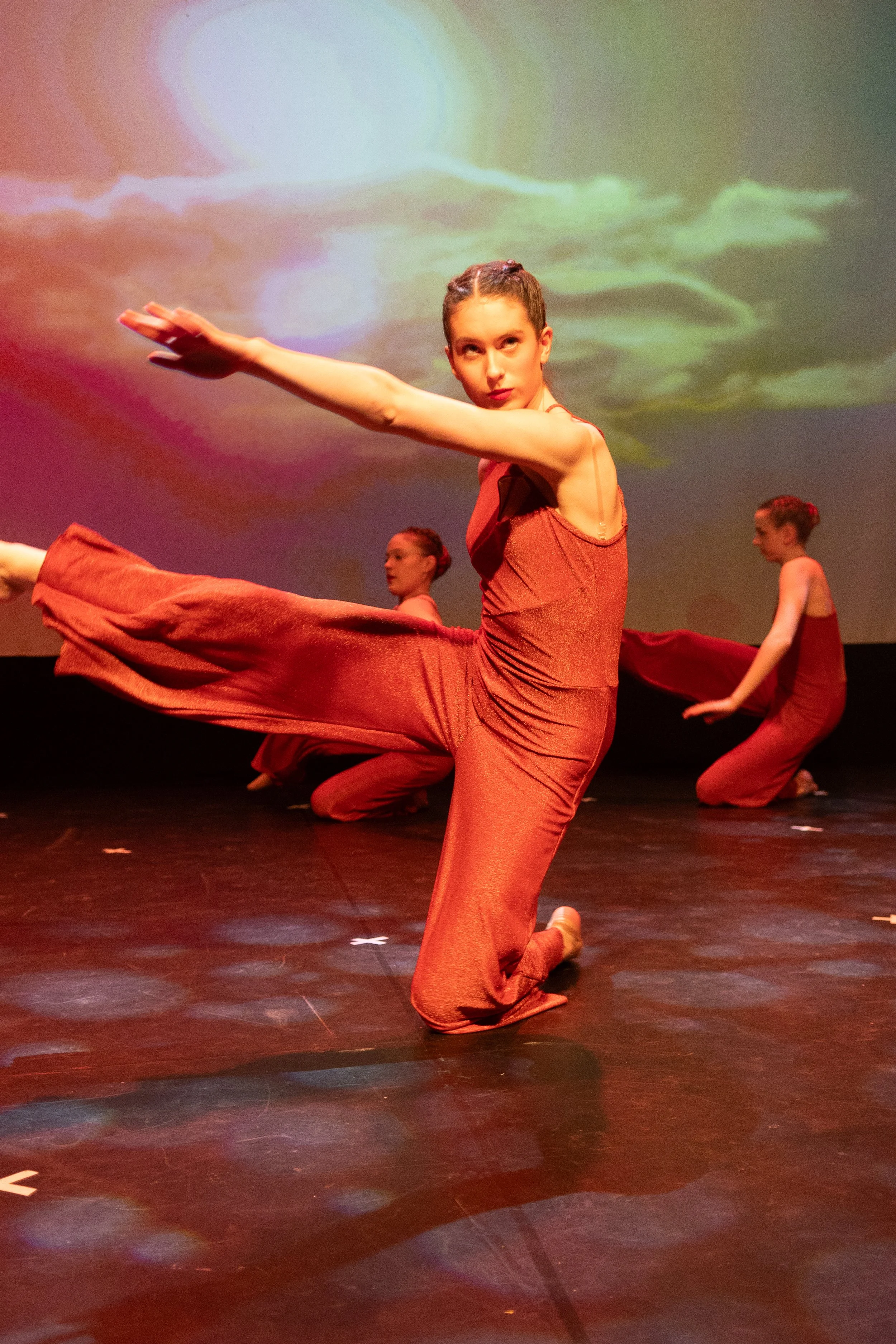Classical Ballet
Classical ballet is a true form of art that requires grace, dedication and discipline. Our classes are carefully structured to encourage correct posture and weight placement, alignment, control and awareness, rhythm, poise, grace, musicality and artistry as well as developing a passion for creativity and enjoyment of movement. The study of Classical Ballet offers many benefits for students of all ages. Some benefits include building self-confidence and self esteem, muscular strength, co-ordination, flexibility, stamina. It also provides an opportunity to meet new friends with a shared interest.
Modern Theatre Dance
In the early 1900's, the American dancers Isadora Duncan and Ruth St. Denis started to rebel against the rigid constraints of classical ballet. These early Modern dancers tended to focus on creative self-expression rather than technical virtuosity. Modern Theatre/ Jazz is a more relaxed free style of dance and classes tend to be structured around travelling steps, high kicks, leaps and turns to fun, familiar and up to date music. Modern theatre dance has been popularised by the Hit TV show 'GLEE' and on Musical Theatre Productions in the West End and Broadway. Modern Theatre Dance is a highly energetic form of dance that utilises strength, stamina and flexibility. It has a deliberate use of gravity and force.
Tap Dance
Tap dance has evolved as an American dance form, popularised throughout the world, with debate about its origins coming from African dance, Irish dance and/or clog dancing. The dancer uses their feet to strike the floor, beating out different rhythms, with dancers wearing tap shoes which have small metal plates on the toe and heel to give the distinctive sound. Tap dance is a theatrical art form often seen on stage in musicals. Two major variations on tap dance exist: rhythm (Jazz) tap and Broadway tap. Broadway tap focuses more on the dance, and is widely performed as a part of musical theatre. Rhythm tap focuses more on musicality, and practitioners consider themselves to be a part of the Jazz tradition.
Contemporary Dance
Contemporary Dance is an expressive style of dance that combines elements of Modern, Jazz, Lyrical and Classical Ballet. The main aim for dancers is to connect the mind and the body through fluid dance movements. The main focus of a contemporary class is based on versatility and improvisation, unlike the strict, structured nature of ballet. Contemporary dancers concentrate a lot of time on floor work, using gravity to pull them down to the floor. This dance genre is often done in bare feet. Contemporary dance can be performed to many different styles of music. Renowned innovators of contemporary dance include Isadora Duncan, Martha Graham and Merce Cunningham. These contemporary dancers all believed that dancers should have freedom of movement, allowing their bodies to freely express their innermost feelings. This style of dance has been brought to the forefront in recent times by TV programmes such as ‘Got to Dance’ & ‘DanceMoms’
Modern / Hip Hop
Hip-hop is an energetic and upbeat dance style as is usually danced to up to date / current pop music. The structure of the class consists of a warm up, technical corners exercises that builds strength and develops co-ordination, followed by a routine that progress throughout each term. Each class finishes with a cool down and appropriate stretches for the large muscles of the body. Rhythm and performances skills are taught in this class too.
Lyrical Dance
Lyrical Dance comes from the word “lyrical,” which means to have a poetic, expressive quality; expressing spontaneous feelings and deep personal emotions. Music used for Lyrical dance is usually emotionally charged and expressive and gives dancers a chance to express a range of strong emotions through their dancing. Although Lyrical dance takes from ballet and jazz styles, it is not as physically demanding as these styles. There is less concentration on precision and more on individual style. This enables more people to explore this modern style – people with different body types, different experiences, and different ages. When learning a lyrical dance, it is important and helpful to have some ballet experience although it is not essential.
ACRO Dance
Acrobatic Dance or Acro is a style of dance that combines nearly any style of dance, but usually lyrical, contemporary, or jazz with acrobatic skills and tricks. It is safe when skills
are taught incrementally and with an Acrobatic Teacher certified in safe training practices. Skills taught include hand stands, cartwheels and forward rolls that progress on to tumbling, balances and partner lifts / stunts. TV programmes such as ‘So you think you can dance’ ‘Dance Moms’ and productions such as ‘Cirque de Soleil‘ have made this form of dance extremely popular.
Dance Examinations
Students may be given an opportunity to be presented for Imperial Society of Teachers of Dance examinations in both Classical Ballet and / or Modern Theatre Dance and also Royal Academy of Dance Ballet Exams.
W1K Ladytown Business Park, Toughers, Naas, Co. Kildare, Ireland
COPYRIGHT © 2010-2021, [KILDARE ACADEMY OF DANCE]. ALL RIGHTS RESERVED.


